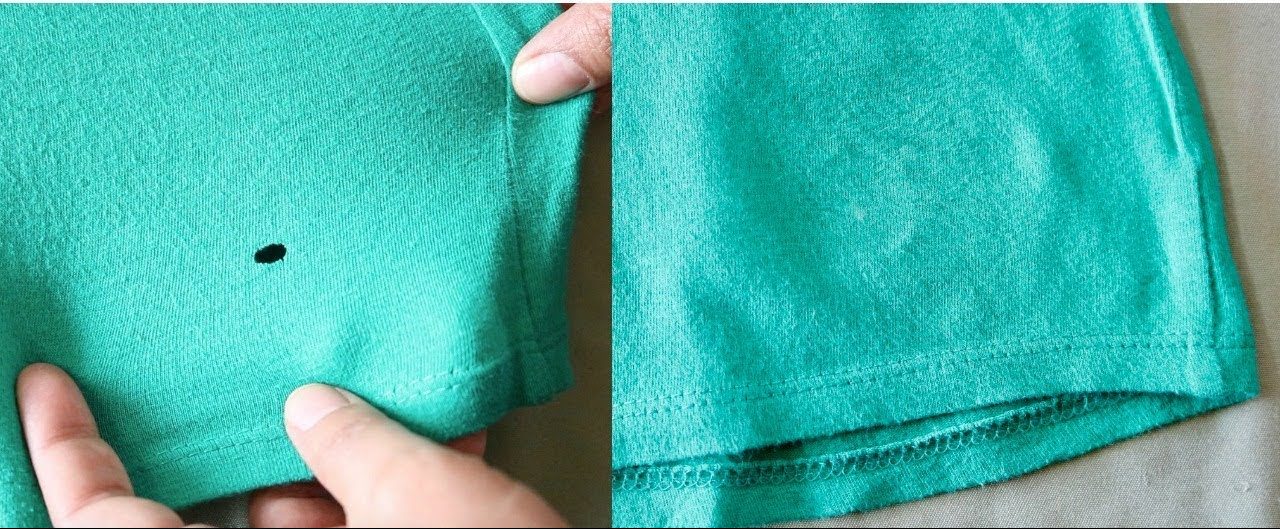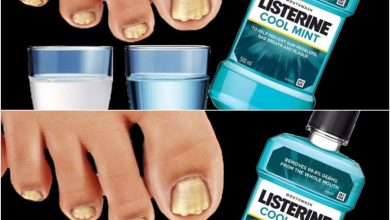Every now and then, you might notice a hole in your favorite shirt or pants. But hold on before you toss them out! You can still save those beloved items, even if you’re not a sewing expert. In fact, this technique is super helpful for small holes because it makes the stitches smooth and not so noticeable. Once you start looking for those annoying little holes, you might find more than you thought in your closet. The best part is that once you master this trick, mending each tiny hole will only take a few minutes!
What Causes a Hole in Clothing
Those pesky little holes can appear for many reasons. Sure, moths often get the blame, but they aren’t the only culprits. Regular wear and tear can lead to small holes, and even things like zippers or jewelry can catch and make problems too. These can include:
- Zippers
- Bras
- Belts
- Your washing machine
- Chlorine bleach
- Snags on rough surfaces

How to Prevent Holes
The places where holes show up can give clues about what’s causing them. For instance, if you notice holes at the bottom of your shirts, it might be because of belt buckles rubbing against the material. If that’s true, you could think about not wearing a belt, changing how you wear it, or using sandpaper to smooth out any sharp parts. If you tuck your shirts into your jeans, the zipper could be the culprit for the holes. Also, zippers can damage clothes in the washing machine. So, always remember to zip up your jeans, hoodies, and similar items before washing to prevent them from getting caught on other fabrics. And don’t forget to close your bras before washing to stop the metal clasps from snagging on other clothes. If your bras often come undone, it’s smart to wash them in a separate bag.
When it comes to washing machines, there are a few habits that can mess up your clothes. For instance, stuffing too many items into the washer can lead to zippers and buttons getting stuck, which might tear your clothes. So, be careful not to overload the washer, and always turn clothes with beads, buttons, or other decorations inside out before you wash them.
You should always keep delicate materials like cotton and silk separate from tougher items like sheets and towels. When you wash silk and other fragile fabrics, make sure to use a gentle spin cycle. Be cautious with chlorine bleach, as using too much or not correctly can harm your clothes. To play it safe, consider using eco-friendly alternatives like vinegar, citric acid, or baking soda.
Moths are known for creating holes in clothes, especially in fabrics made from animals like wool, silk, and leather. They can also eat through other kinds of fabric. To catch male moths, you can use pheromone traps. Plus, placing dried lavender in small mesh bags or using mint or lavender essential oils can help repel the other moths. If you have a big moth issue, washing your clothes in warm water and cleaning your closet with vinegar can work really well.
Be careful of rough surfaces like brick, sharp nails, wood, and stone. If you accidentally brush against them or hit them, they can cause snags. You might not notice these tiny holes at first, but they can grow larger and become a bigger problem after washing or just from everyday use. If you have these types of surfaces in your house, consider making them smoother or covering them to avoid any unintentional rips.
How to Repair Clothes Without Sewing
Before you start fixing any holes, you will need the following:
- Clothes with holes measuring 5 mm or less
- An Iron
- Fusible bonding web
- A large piece of wax paper
Directions:
1. Turn the damaged article of clothing inside out and place it on the ironing board, the hole facing out.
2. Cut a small piece of fusing web. It should be slightly bigger than the hole you’re trying to repair.

3. Gently push both sides of the hole together (so that it looks like the hole is gone) and place the fusing web over the hole. Place the wax paper over the same spot. You can purchase fusing web at places like Walmart, fabric or craft stores, and Amazon.
4. Next, set your iron onto its “wool” setting and place it onto the wax paper. Do not move the iron or press on it for about 10 seconds. Remove carefully.

5. Finally, pick up the piece of clothing and turn it right-side-in to examine the hole. If it hadn’t closed smoothly, use your fingers to close the hole like in step two. Repeat steps three and four with the iron until the clothing looks good as new. It may take a few tries to master the method, but when you succeed, you’ll notice immediately that the hole looks gone. [3]

Sources: wdyst.me
- “7 Sneaky Causes of Holes in Clothes and How to Avoid Them (It’s Not Always Moths!).” Utopia. June 23, 2023.
- “What Causes Holes in Clothes After Washing.” The Spruce. Mary Marlowe Leverette. February 28, 2023
- “Got a Hole in Your Favorite T-Shirt? Here’s the No-Sew Trick to Fix It.” Tip Hero.






